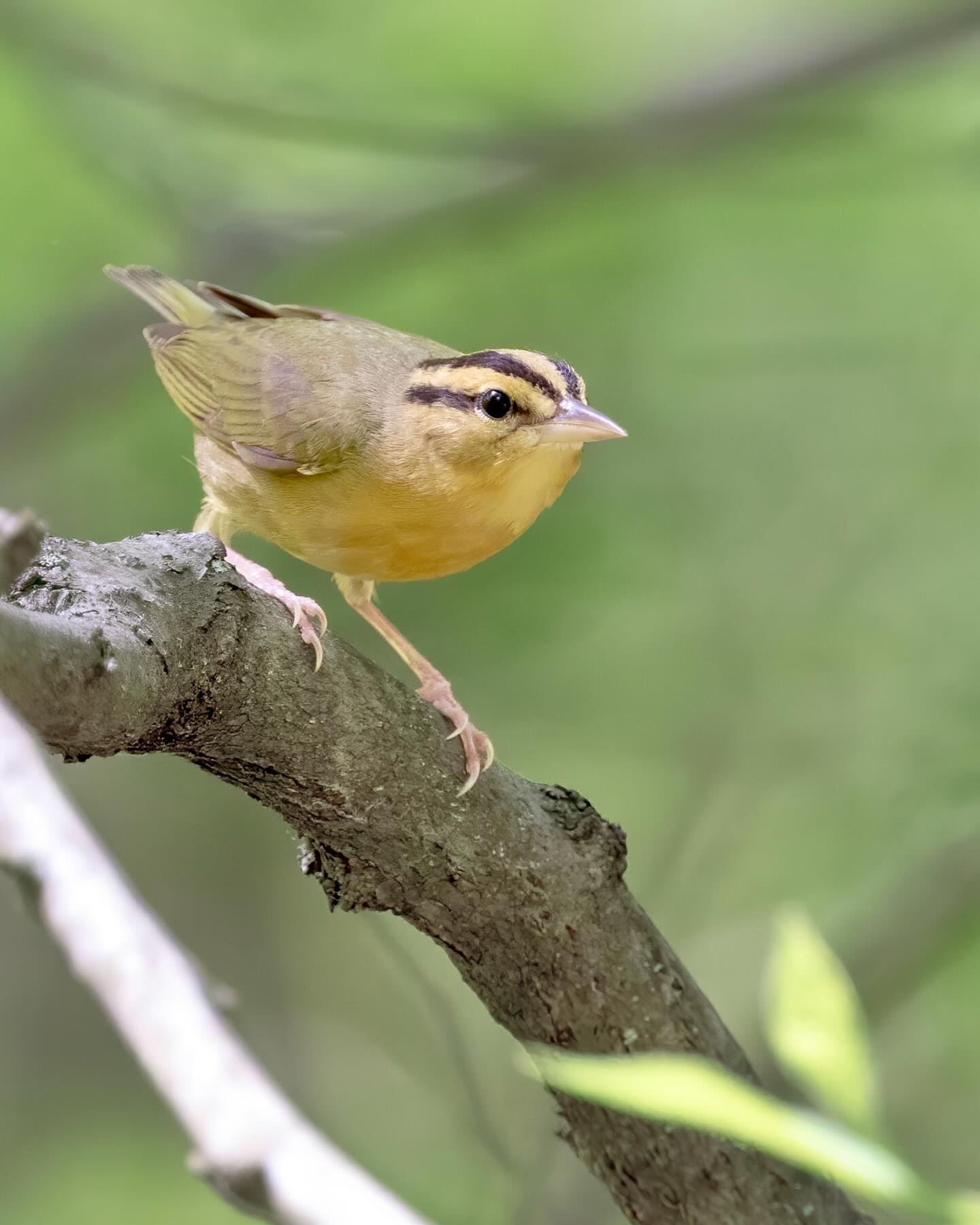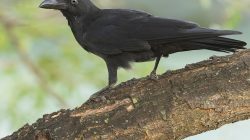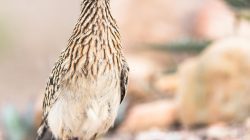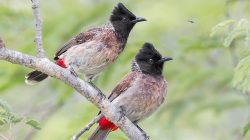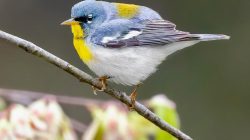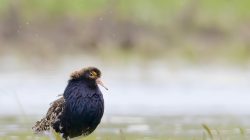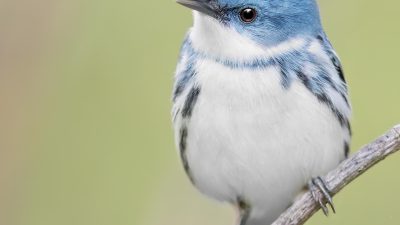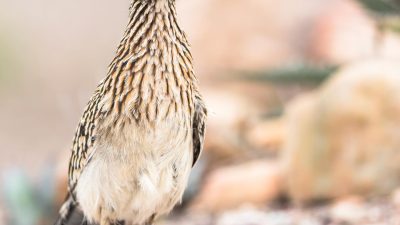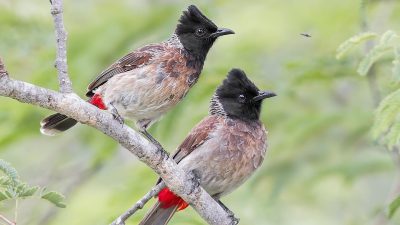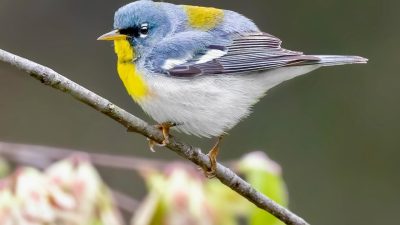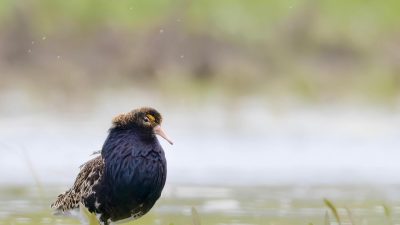The Worm-eating Warbler (Helmitheros vermivorum): An In-Depth Exploration of a Unique Songbird
Diajar.net – The Worm-eating Warbler (Helmitheros vermivorum) is a small and elusive songbird native to North America, with a fascinating life history and ecological role. Known for its distinctive diet, this warbler is an excellent example of how specialized feeding behaviors can influence a bird’s evolution and survival. This article provides a detailed examination of the origin of its name, its appearance, distribution, geography, habits and lifestyle, diet and nutrition, population, number of populations, and conservation status.
Origin of Animal Name
The scientific name of the Worm-eating Warbler, Helmitheros vermivorum, carries insight into the bird’s behavior and physical traits, which are essential for understanding its ecological role. The genus name Helmitheros was introduced by the renowned ornithologist George Newbold Lawrence in 1851. Its derivation is from the Greek word “helminthos,” meaning “worm,” and the suffix “theros,” which refers to a “hunter” or “predator.” This name reflects the warbler’s well-known dietary preference for caterpillars, worms, and other invertebrates, particularly those found under tree bark.
The species name, vermivorum, also draws from Latin, with “vermi” meaning “worm,” and “vorum” meaning “eater” or “devourer.” Thus, the scientific name as a whole highlights the bird’s primary feeding behavior — consuming worms, larvae, and other similar organisms.
The common name, Worm-eating Warbler, is a direct reference to its diet, which includes a significant portion of earthworms, caterpillars, and larvae, distinguishing it from other species of warblers that may have more generalized diets.
Appearance
The Worm-eating Warbler is a small, slender bird with distinctive plumage and markings, making it an easy-to-spot species in its forested habitats, though its habits may sometimes make it elusive. It measures approximately 12 cm (4.7 inches) in length and weighs around 9–12 grams, making it a typical size for warblers.
Plumage and Coloration
The Worm-eating Warbler is primarily olive-brown on its back and yellowish-white on its underside, with distinct black streaks along the sides and flanks. One of the most striking features of this bird is its head pattern, which features bold black streaks that run from the crown down the sides of its face and through the throat. These streaks create the appearance of a “mask” or “head stripes”, which help camouflage the bird in its natural habitat. The eyes are dark and surrounded by a slightly paler ring, giving it a sharp and observant look.
The tail is moderately long and slightly forked, with dark, pointed feathers that add to its sleek appearance. Its wings are also dark with pale edges, and when it is perched or in flight, the wings display a somewhat flickering movement that makes the bird noticeable. The legs are slender and pale, and its bill is thin and slightly curved, ideal for picking insects off tree bark or from the forest floor.
Sexual Dimorphism
There is little sexual dimorphism in the Worm-eating Warbler, as both males and females appear quite similar. However, males tend to exhibit slightly more vivid colors during the breeding season, especially in terms of the intensity of their streaking and the brightness of their underparts. The difference between sexes is usually only noticeable during close inspection or in terms of behavioral traits during mating.
Distribution
The Worm-eating Warbler has a restricted range compared to other North American warblers. It is primarily found in the eastern and central United States, though it migrates seasonally. The species is known for its nomadic tendencies, following the availability of suitable habitats during different parts of the year.
Breeding Range
During the breeding season, the Worm-eating Warbler’s range extends from the southern Great Lakes, parts of Missouri, Arkansas, and Tennessee, to as far south as Louisiana and Mississippi. The birds tend to breed in deciduous forests, particularly in areas with thick underbrush and rich leaf litter that supports their worm-eating habits.
Wintering Range
When the weather turns colder, the Worm-eating Warbler migrates to Mexico, where it can be found in warmer, lower-elevation forests. In particular, the southern states of Mexico and parts of Central America provide suitable overwintering grounds, where the bird’s diet of worms and other invertebrates is still abundant. The migration of these warblers is typically southward, but they may sometimes venture into parts of Florida and Texas during the winter months.
Geography
The Worm-eating Warbler’s habitat preferences are closely tied to its geographical range. It is primarily found in temperate deciduous forests, woodland edges, and riparian areas, where it can forage for its preferred diet of earthworms, caterpillars, and insects.
Forest Types
This warbler thrives in areas with mature forests that are not overly disturbed by human activity. It prefers mesic forests, which are neither too dry nor too wet. Typically, these habitats are located in elevated regions or near riverbanks where forest undergrowth can provide ample places for the bird to search for food.
Preferred Elevations
During the summer months, the Worm-eating Warbler is typically found at elevations ranging from 300 to 1,200 meters (980 to 3,900 feet). The forests in these areas are often mixed woodlands of oak, hickory, and maple, with a variety of understory plants that encourage a high concentration of insects.
Habits and Lifestyle
The Worm-eating Warbler is a solitary and secretive bird that prefers dense, brushy habitats. It is not often seen in open areas but instead forages among the thick undergrowth of the forest floor, where it hunts for invertebrates, particularly caterpillars and worms. This feeding strategy is central to the bird’s identity and ecological role in its habitat.
Foraging Behavior
The Worm-eating Warbler employs a distinctive foraging behavior that sets it apart from many other warblers. The bird uses its small, curved bill to probe into the leaf litter or peel away bark from trees in search of worms and caterpillars. This bark-exploring behavior allows the bird to access a food source that is somewhat protected from other predators. The warbler also displays a flicking motion when foraging, a rapid shaking of its wings and tail that helps dislodge insects and allows it to capture its prey mid-flight.
Breeding and Territoriality
During the breeding season, male Worm-eating Warblers are known to establish territories, defending them from other males. They engage in vocal displays and are highly territorial, calling out to announce their presence and discourage other birds from entering their space. The courtship behavior of the males is often centered around vocalizations and song, which they use to attract potential mates.
Diet and Nutrition
The Worm-eating Warbler has a highly specialized diet that revolves around earthworms, caterpillars, and other insects found under tree bark and in leaf litter. Its long, slender bill allows it to extract its prey from small crevices in the forest floor or bark. This specialized diet is a key characteristic of the species, as few other warblers target worms in this way.
Insects and Invertebrates
In addition to earthworms, the Worm-eating Warbler also consumes a variety of larvae, beetles, and ants, which are often abundant in the deciduous forests it inhabits. The bird is particularly adept at hunting caterpillars during the late spring and summer, a time when these insects are most abundant.
Seasonal Diet Variations
While the Worm-eating Warbler primarily feeds on invertebrates, it will also consume small fruits and berries if the opportunity arises. In late summer and fall, its diet may shift slightly to include more fruit, especially when insect populations decline in cooler months.
Population
The population of the Worm-eating Warbler is currently considered stable, though there are signs of localized declines in certain regions due to habitat loss and climate change. The bird’s ability to adapt to changes in its environment, such as migration patterns and habitat fragmentation, plays a significant role in maintaining its population stability.
Number of Populations
The Worm-eating Warbler is found in several distinct populations across its range. These populations are distributed across the eastern United States, with a concentration in the southern Great Lakes region, and parts of Mexico during the winter. While these populations are somewhat dispersed, they remain connected through migratory movements that ensure genetic diversity and species continuity.
Conservation
The conservation status of the Worm-eating Warbler is currently classified as Least Concern by the International Union for Conservation of Nature (IUCN). However, conservationists express concern over habitat destruction, particularly deforestation and fragmentation of woodland habitats, which may negatively impact the bird’s long-term survival.
Threats to Habitat
The primary threats to the Worm-eating Warbler’s population are urbanization, agricultural expansion, and climate change. The destruction of mature forests and the degradation of riparian habitats reduce the bird’s available nesting and foraging sites. In addition, changes in climate may lead to shifts in the timing of migration, potentially affecting the availability of food during key times of the year.
Conservation Efforts
Conservation efforts aimed at protecting the Worm-eating Warbler focus on preserving its forest habitats and mitigating the impact of land-use changes. Creating protected areas, restoring degraded habitats, and promoting sustainable forestry practices are key components of these efforts. Public awareness campaigns also play a crucial role in informing the public about the importance of conserving the bird’s habitat.
Conclusion
The Worm-eating Warbler (Helmitheros vermivorum) is a fascinating bird, known for its distinctive feeding habits and its striking appearance. While its population remains relatively stable, conservation efforts are necessary to protect the species from the ongoing threats of habitat loss and climate change. By understanding the bird’s habits, diet, and ecological needs, we can ensure that future generations will continue to enjoy the presence of this unique and specialized songbird in the forests of North America.
